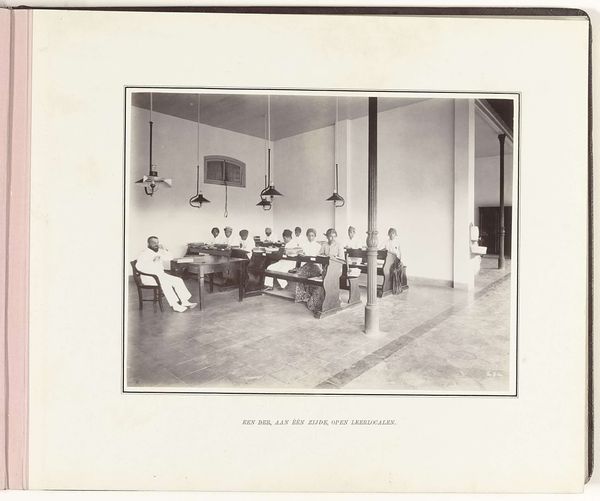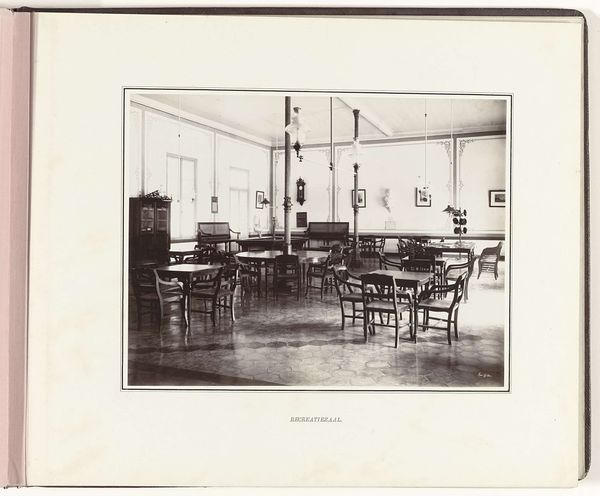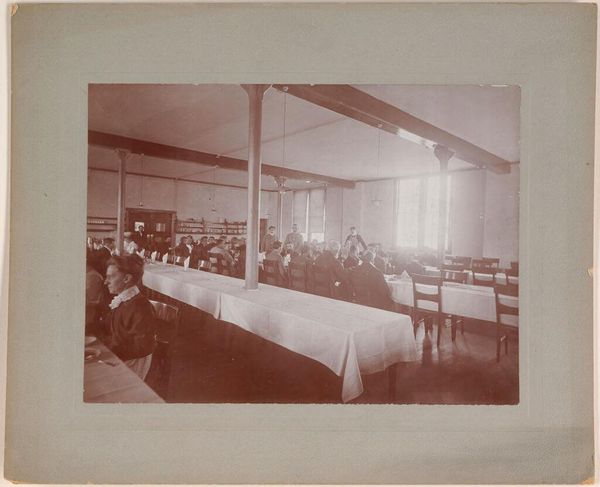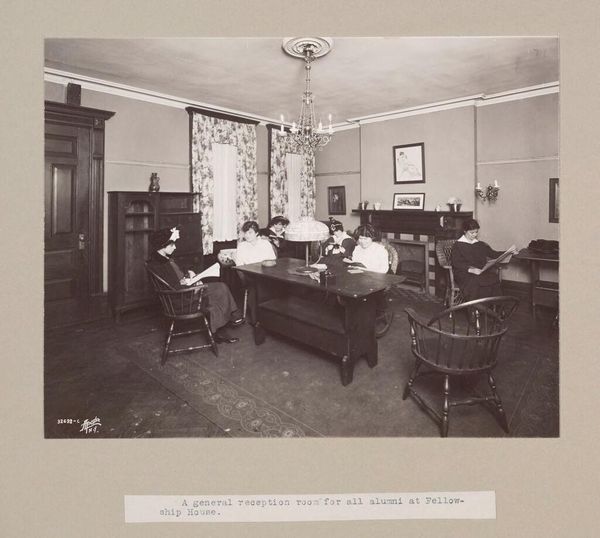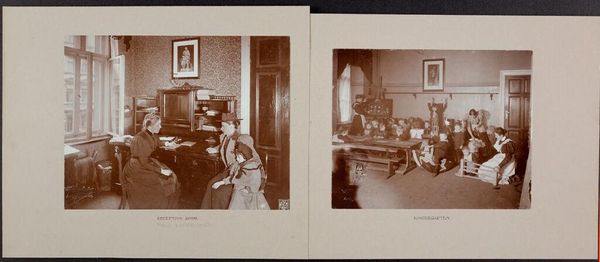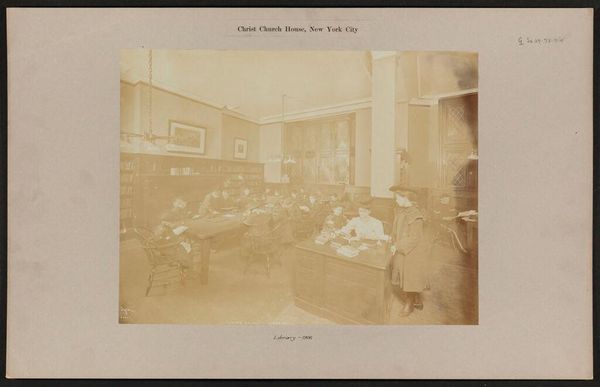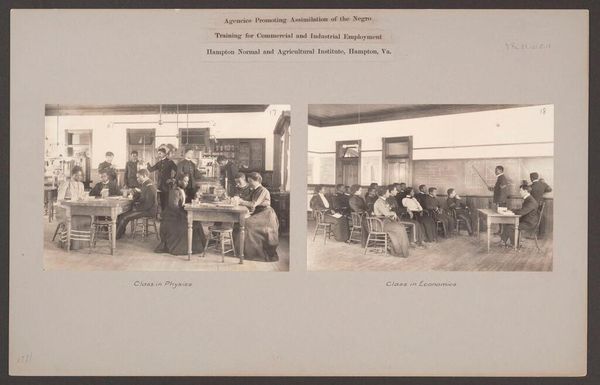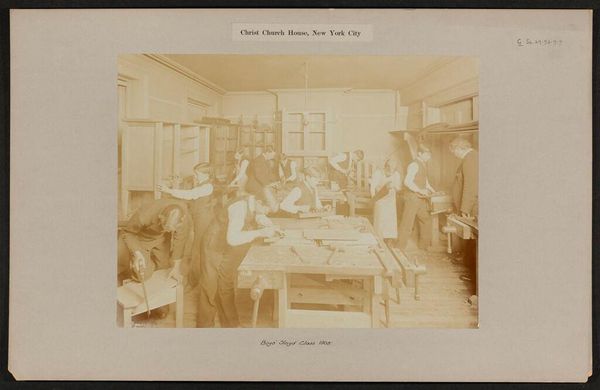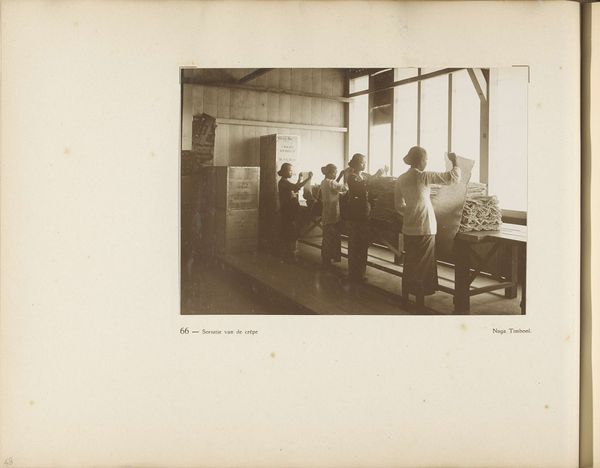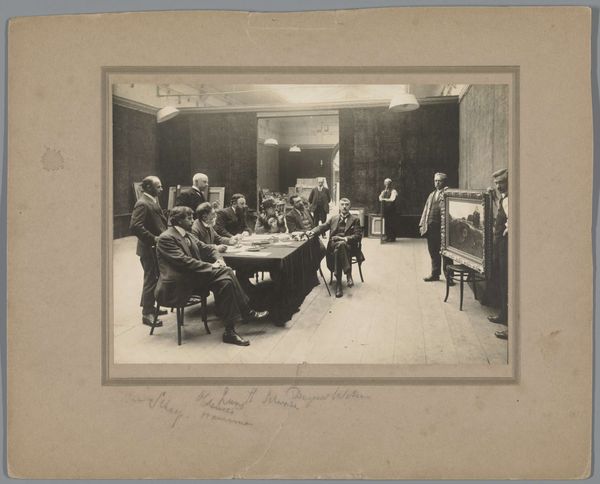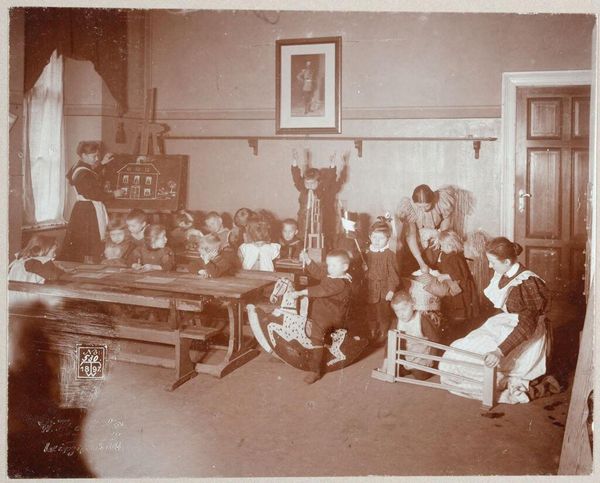
photography, gelatin-silver-print
#
portrait
#
asian-art
#
indigenism
#
photography
#
gelatin-silver-print
#
19th century
#
history-painting
#
academic-art
#
realism
Dimensions: height 186 mm, width 245 mm
Copyright: Rijks Museum: Open Domain
Curator: This photograph, titled "Amphitheater voor het onderwijs in ontleedkunde" or "Amphitheater for instruction in anatomy," was taken around 1902 by Tan Tjie Lan. The image is a gelatin silver print. What's your immediate take on it? Editor: Striking. There's a real sense of staged formality but undercut by the very stark, almost industrial quality of the amphitheater itself. It looks incredibly pragmatic; utilitarian, almost. Curator: Yes, I agree about the striking stillness of the arrangement and appreciate how the tonal range is narrow. The eye navigates methodically around the amphitheater. Its careful calibration makes it almost painterly. What about the classroom setup? Editor: It’s all about production and labor, isn’t it? I see rows of students – they all look very uniform – with the skeletal model positioned like a prop for both a macabre and medical display. Everything screams the infrastructure required to teach. This feels almost colonial; that infrastructure being laid to bring some of that 'western' knowledge to Asia. Curator: Your mention of "colonial" and the uniformity highlights its construction. I would want to investigate what structures of knowledge the photograph reifies through its emphasis on linear perspective and composition. The central framing of the skeletal figure almost echoes the way history painting centralizes its figures within orthogonal arrangements. Editor: Exactly! And how is this “knowledge” delivered, who labors for it? We’re given almost nothing to contextualize it. The people here – where did they source their materials? Who produced the photograph itself? It’s also really interesting to consider the accessibility to the image. Looking at this, it highlights the limitations on material, education and more. Curator: I understand your materialist perspective, its limitations do resonate with your insight, as do the questions you are positing here on a visual field; questions of representation. Thank you. Editor: Thanks. Looking through this colonial-industrial lens gives new perspective to me on art!
Comments
No comments
Be the first to comment and join the conversation on the ultimate creative platform.
